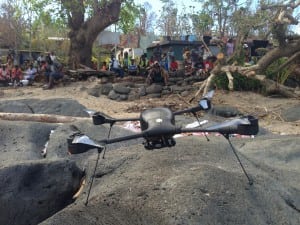
Lockheed Martin’s [LMT] Indago small unmanned aerial system (UAS) recently deployed to Vanuatu to help the impoverished Pacific archipelago nation recover from a devastating natural disaster, the company announced May 4.During a two-week mission that ended in mid-April, the five-pound, quad-rotor Indago, operated by Australia’s Heliwest, collected video and photographs to map damage caused by Cyclone Pam in March. Winds reaching 200 miles per hour had destroyed many of Vanuatu’s hut dwellings and food crops, said Luke Aspinall, Heliwest's manager…













